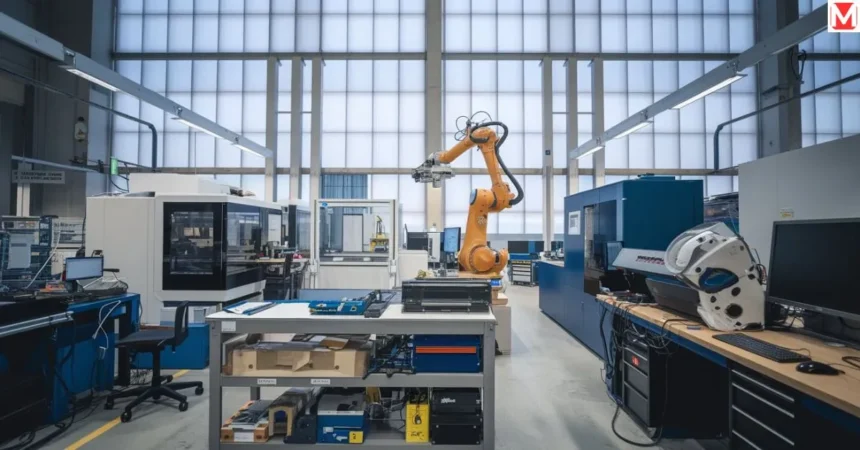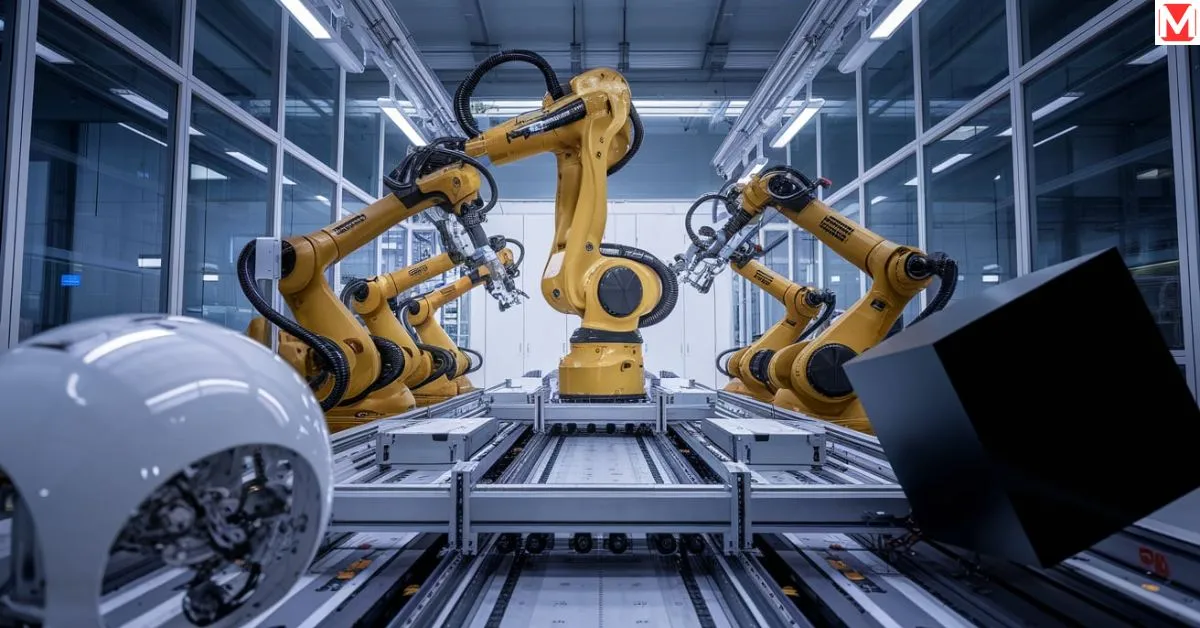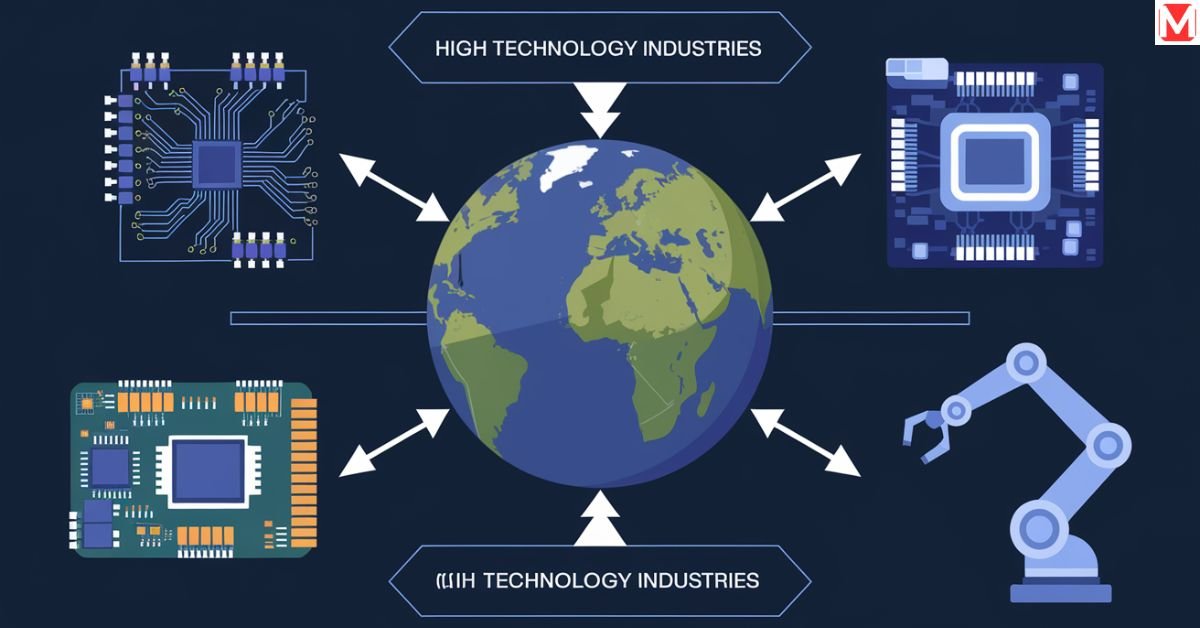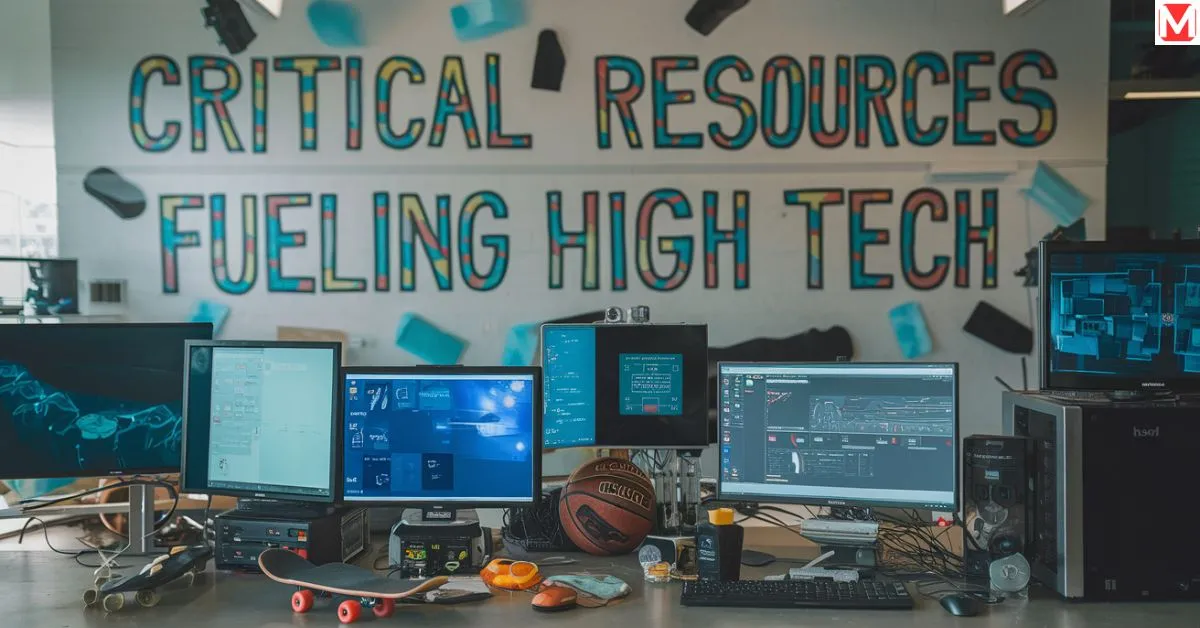Search
Have an existing account?
Sign In


Imagine a world where over 30% of global economic growth in 2024 came from high technology industries. That’s not sci-fi it’s happening now. These advanced sectors, spanning artificial intelligence, biotechnology, and clean energy, don’t just churn out cool gadgets.
They’re solving climate crises, boosting economies, and reshaping how you live. So, what fuels this technological industry? Let’s dive into its pillars, resources, and why it matters as of March 1, 2025.
This isn’t vague hype. You’re about to explore the cutting-edge industry, its wins, its risks, and where it’s headed.

The high technology industry isn’t one-note, it’s a symphony of innovation sectors. Here are three heavy hitters driving the show.
AI powers more than movie robots. It’s the brains behind Tesla’s self-driving cars and doctors spotting heart risks early. In 2024, AI slashed logistics costs by 15% for giants like Amazon, fine-tuning delivery routes with eerie precision.
But hold up it’s not flawless. Job losses sting think truckers sidelined by autonomous rigs. Privacy worries loom too. Who’s peeking at your search history? The innovation sector thrives on AI, but balancing progress with ethics is tricky.
Fossil fuels are fading. Renewable energy solar, wind, hydrogen lit up 40% of global grids in 2024, says the IEA. Solar’s dirt cheap now 80% less than in 2010. Hydrogen buses zip through Tokyo, proving eco-friendly energy rocks.
Challenges linger, though. Old grids creak, and batteries guzzle rare minerals. Even so, clean technology pumps life into high technology industries, blending green goals with profit.

No high technology industries without raw power. Let’s unpack the essentials.
Rare earth elements (REE) like cerium, lithium, and cobalt aren’t just rocks, they’re tech’s lifeblood. Lithium juices electric vehicle batteries. Cobalt keeps smartphones buzzing. In 2024, demand for these critical minerals jumped 25%, per the USGS.
But here’s the rub: China controls 60% of supply. Mining scars the earth too, think of water contamination. The technological industry leans hard on these specialty metals, so securing them is a global chess game.
Why mine more when you can reuse? The circular economy tackles resource scarcity head-on. Bio-adsorption a fancy term for using microbes, pulls cerium from wastewater. Coal waste now yields rare earths too, cutting environmental harm.
In 2024, recycled lithium hit 10% of supply, up from 2% in 2020. Sustainable tech like this keeps high technology industries rolling without trashing the planet.

High technology industries don’t just build stuff, they shift economies and borders.
International trade bends under tech’s weight. Semiconductor shortages in 2023 stalled car production worldwide, proving the tech sector rules supply chains. China, the U.S., and the EU slug it out for dominance, with $500 billion in cross-border trade tied to tech goods in 2024.
Sector shifts dazzle too. Software now outpaces steel in export value. High technology industries rewrite the global trading playbook.
Tech pays big. High-tech jobs average $95,000 yearly 80% above the norm, says the BLS. Cities like Austin thrive as tech enterprises spawn startups and tax revenue.
Growth advantages ripple out. Every tech job creates 4.3 indirect jobs think cafes near Google’s HQ. The financial benefits of this advanced sector are hard to ignore.
Japan’s a tech titan worth watching. Post-Fukushima, it pivoted from nuclear power plants to renewables and AI. By 2024, 30% of its energy was green, backed by $50 billion in R&D.
The lesson? Adapt fast and invest big. Japan’s nuclear facilities still hum, think layered protection with defense-in-dept,h but sustainable energy steals the spotlight.
Japan’s Energy Mix (2024):
| Source | Share |
|---|---|
| Renewable | 30% |
| Nuclear | 20% |
| Fossil Fuels | 50% |
Tools amplify high technology industries. Here’s how.
GIS maps the tech world. It pinpoints biotech hubs or solar farm sites with laser focus. Take Cambridge, UK: GIS shows its tech cluster thrives on talent, universities, and transport key for innovative sectors.
In 2024, GIS cut site selection costs by 20% for wind projects. This tech keeps high technology industries grounded literally.
Smart grids think fast. Agile energy systems balance supply and demand live, say, shifting solar power to peak hours. In California, they cut blackouts by 15% in 2023.
This clean technology blends renewables with resilience, dodging hypothetical events like grid crashes. High technology industries lean on it to stay nimble.

High technology industries shine, but shadows lurk.
Mining rare earth elements scars the planet. A single ton of lithium needs 500,000 gallons of water, though in dry zones. Semiconductor fabs guzzle water too, straining water infrastructure.
Green energy aims to fix climate woes, but extraction fights that goal. Sustainable tech must bridge this gap.
Rare earth processing isn’t pretty. Workers face lung issues from dust, think silicosis on steroids. Water systems near mines turn toxic too, per a 2024 WHO report.
Safer methods like bio-adsorption cut risks. High technology industries need strict rules to protect people and places.
Smart grids and AI? Hackers love ‘em. A 2024 breach in Ukraine’s power reactor system cost $200 million. Over-reliance on tech enterprises makes us vulnerable.
Multi-layer safety like defense-in-depth shields systems. High technology industries must fortify without freezing innovation.
Where’s this technological industry headed? Peek into tomorrow.
AI, biotech, and green energy collide. AI designs solar panels 20% more efficient. Gene-edited crops fuel biofuels. In 2024, these mashups cut R&D time by 30%.
This synergy powers high technology industries into uncharted territory fast.
Global supply chains wobble, think chip shortages. Local tech hubs rise instead. By 2024, 15% of U.S. tech production shifted home, per Deloitte.
Smaller water networks and reactor cooling systems boost resilience too. High technology industries adapt to thrive anywhere.
Tech’s not just for profit, it’s for people. Affordable solar hits rural Africa. Health tech targets equity, I think $10 glucose trackers. In 2024, 25% of tech funding went human-first.
This trend keeps high technology industries grounded in real impact.
High technology industries aren’t about gizmos, they’re about survival and growth. From AI’s smarts to renewable energy’s promise, they tackle big problems with bigger solutions. Risks like environmental strain or cyber threats? Real, but solvable.
Best Laptops of 2025: Your Ultimate Guide to Smarter Choices Best laptops in 2025 redefine…
Transform Your Life with the Best Smart Home Devices in 2025 Smart home devices turn…
Best USB Hubs in 2025: Expand Your Laptop or PC the Smart Way USB hub…
Sign in to your account